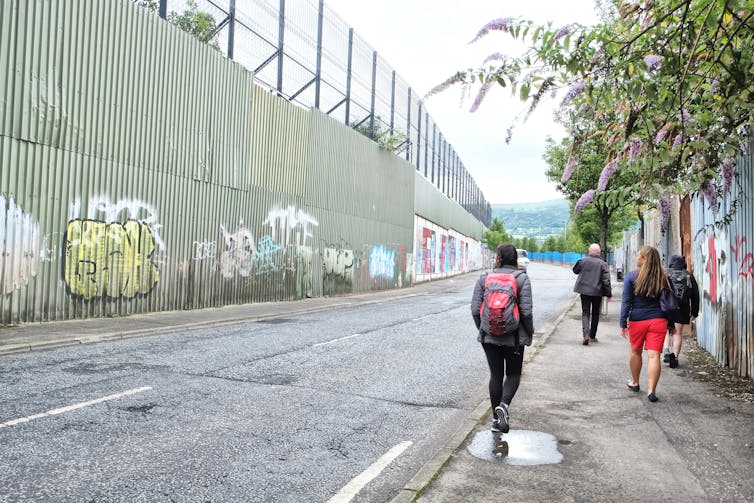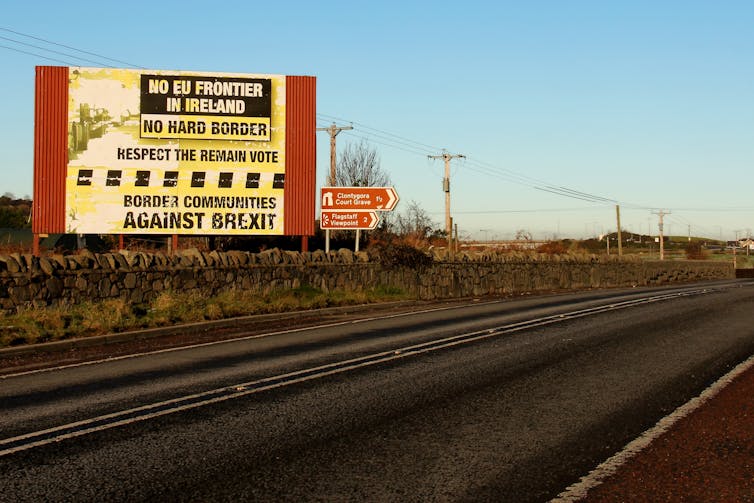The results of the 2021 Northern Ireland census have been released and they show that 42.3% of the population identify as Catholic and 37.3% as Protestant or other Christian. The census included a supplementary question asking respondents – whether they were in fact religious or not – in which religion they were brought up. When adding in these answers, the percentages of Catholics and Protestants rise to 45.7% and 43.5% respectively.
You can listen to more articles from The Conversation, narrated by Noa, here.
This outcome, though not unexpected, is hugely symbolic. When Ireland was partitioned a century ago, religion figures from the 1911 census were used to draw Northern Ireland’s boundaries. This was to ensure that the territory had a Protestant majority of roughly two-to-one, supportive of the union with Britain.
As with previous Northern Ireland censuses, the spotlight has been on the religion numbers. Headlines across the board have highlighted that Catholics now outnumber Protestants for the first time. Drawing political conclusions from these figures, however, has always been problematic.

What the religion statistics actually show
It is not surprising that these most recent census results have been hailed by nationalists as signalling that Irish reunification is edging closer. The Good Friday Agreement includes a provision for a border poll to be held, should a majority appear to favour Irish unity. With Brexit already causing some to question the value of Northern Ireland’s place in the union, some have suggested that demographic change might be a factor in triggering a poll.
Opinion polling, however, has consistently shown that a significant minority of Catholics do not necessarily favour Irish reunification. Further, the proportion of the population describing themselves as neither Protestant nor Catholic has been growing. In 1991, only 3.7% said stated that they had no religion. This has now grown to 17.4%.
It was precisely for this reason that in 2001, faced with the need for data for the purpose of equalities monitoring, that statisticians added the new question about religious background.
What we see now is an increasing proportion of people answering “none” in response to this supplementary question as well –- up to 9.3% in 2021, from 5.6% in 2011. This is, in part, why it appears increasingly uncertain whether the recorded Catholic share of the population will eventually grow to exceed 50%, which some commentators previously anticipated as a border poll trigger.
While those describing themselves as Catholic or from a Catholic background now outnumber those from Protestant backgrounds, between 2011 and 2021, their share of the population only grew from 45.1% to 45.7%. In the medium term at least, Northern Ireland appears set to have three communities, none of which constitute a majority: Catholics, Protestants and “neithers” or “others”.

How people define their national identity
Given all this, some will look for potential clues to the constitutional future elsewhere in the results. Since 2011, the census has included questions on both passports held and national identity, for instance.
It is tempting to think that these questions were added because of their relevance to the debate about Northern Ireland’s future. The real reasons though are more mundane. Moreover, they’re asked in all parts of the UK.
The question on passports was added, initially to the censuses of England and Wales and of Northern Ireland, in order to help satisfy an EU requirement for data on citizenship while the UK was still a member state. The responses available are “United Kingdom”, “Ireland”, “other” and “none”. Perhaps ironically, the rise in the number of people saying they hold Irish passports – from 375,800 in 2011 to 614,300 in 2021 – is likely to have been driven as much by Brexit as by shifting demography.

The addition of the national identity question, meanwhile, was prompted by criticism of the way the census had previously framed ethnicity. The 2021 census gave people in Northern Ireland several national identity options, including British, Irish and Northern Irish. And unlike with religion, they were able to tick more than one box.
In 2011, the results of this new question appeared to offer some hope to supporters of the union. While the Protestant majority had disappeared, unionists were able to point to the fact that only 25% of people described themselves solely as Irish. While those identifying as British did not constitute a majority, they were nonetheless the largest group.
Come 2021, however, and the proportion describing their national identity as British (alone or in combination with other identities) has dropped from 48.4% to 42.8%. As the Belfast Telegraph’s Sam McBride has put it, this “makes unspinnably grim reading for unionists”.
Just as with the religion statistics though, there is a third significant group that emerges from the national identity responses. Adding further complexity to the picture, 31.5% of respondents identified as Northern Irish, with 19.8% selecting this as their only national identity, highlighting that national identity can be more complex than citizenship.
When a border poll comes, the outcome will be decided in the ballot box rather than on census forms. This is not to deny that demographic change is happening in Northern Ireland or that it is politically significant.
What the census results highlight is not simply that there are now more Catholics than Protestants, but that there is a growing segment of the population that defies categorisation. Given that Northern Ireland no longer has a majority community and might not gain a new one anytime soon, appealing to this emerging middle is going to be a big part of how the constitutional future will be won.

